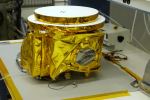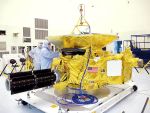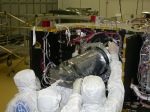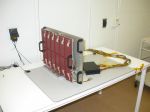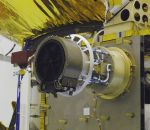Launched on January 19th, 2006 the New Horizons Space Probe was the first mission since Voyager to launch to an unexplored planet!
Designed, built and operated by the Johns Hopkins University Applied Physics Laboratory (APL), New Horizons also features instruments from: SwRI (Southwest Research Institute), NASA’s Goddard Space Flight Center, the University of Colorado, Stanford University and Ball Aerospace Corporation.
(Images from: WordPress and Wikipedia)
New Horizons is comparable to the size of a piano. It is 27 inches tall, 83 inches long and measures 108 inches at its widest. It weighs about 1,054 pounds.
New Horizons made a brief swing by Jupiter in February 2007 to pick up some data and a bit of a gravity boost (Juno-the second New Frontiers mission- launched on August 5, 2011, is focused on finding more in-depth data about Jupiter) before continuing with its “required” objectives in the Pluto System.
On July 14, 2015, New Horizons made its closest approach to Pluto (7,750 miles away from the surface). It’s primary objectives were to:
- Characterize the global geology and morphology of Pluto and Charon
- Map chemical compositions of Pluto and Charon surfaces
- Characterize the neutral (non-ionized) atmosphere of Pluto and its escape rate
and while we’ve gotten a lot of data, New Horizons could take as long as 16 months to get all of the data back to us (it can only transmit 1 to 2 kb/s)-that means we won’t have it all until November of this year! And then of course there is the time it takes for analysis.
But never fear, in the mean time, New Horizons is continuing onward ( at 9.02 miles/s) in the direction of the Sagittarius constellation. The hope is that New Horizons will be able to get observations of a Kuiper Belt Object- PT1 (2014 MU-69) in January 2019.
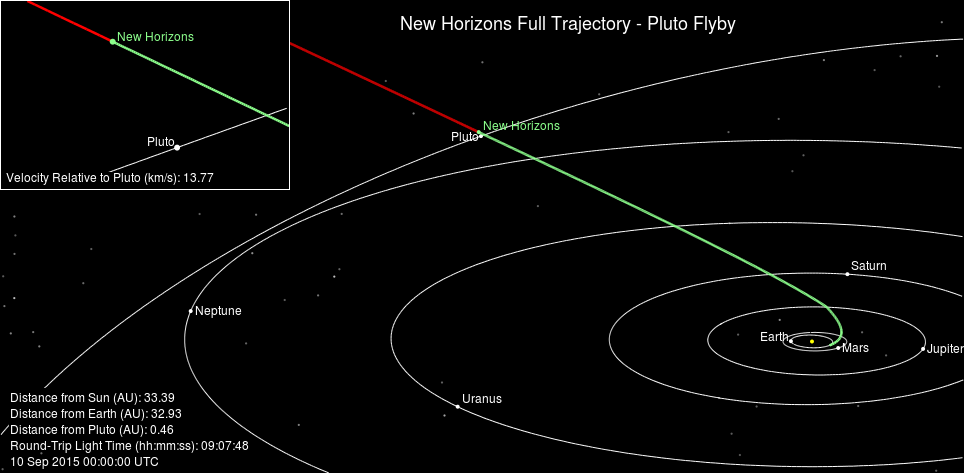
More Info:
See Where New Horizons Currently Is



